WORLD CLASS COACHING
Creating Chaos
By Matt Carroll
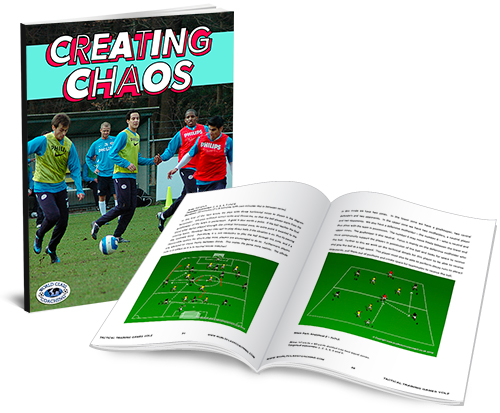
Table of Contents
PART FOUR
Chaos to Create Mental Awareness
Conclusion
Chaos to Create Mental Awareness
The key to thriving in a chaotic game is to be able to recognize the various stimuli being presented and make the most effective decision possible. While it is easier for coaches to simply verbally tell a player to perform an action in an activity at a certain cone, and thus create a clean flowing drill, come game day the effectiveness of such verbal cues is greatly diminished. In the game players must make these decisions themselves and by increasing their on field awareness and ability to receive, recognize, and process visual cues is the best way to develop flexible and intelligent players.
Players will inevitably make mistakes, drills will look more chaotic and maybe even sloppier, and they may make decisions that defy your logic, but that is why it is massively important to ask the players what their viewpoint of the field was. Why did they make the decision, what verbal/visual stimuli were the presented, what was the expected outcome? In doing so, the coach can begin to realign the way the player interprets the game, or better yet, understand the way the player interprets the game to better utilize their skills within the team dynamic.
Color Recognition Game
Description:
The purpose of the Color Recognition Game is to get players to accept both visual and verbal cues and make appropriate decisions based on the interpretation of the stimuli. The competition aspect helps the game translate to the pitch by creating consequence for making the wrong choice, or doing so slowly.
Setup:
Create a grid, size determined by number of players. In each corner of the grid place a different colored cone. Create an age/skill level appropriate obstacle course within the grid. A coach, with a cone that matches each cone in the corners, stands in the middle. Players spread themselves out amongst the grid, each with a ball.
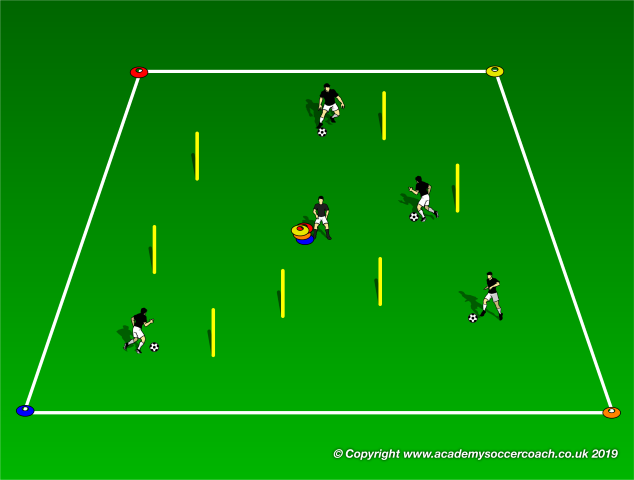
Execution:
Players dribble in the grid without a series of obstacles set up by the coach. The coach stands in the middle with the colored cone and whenever they blow the whistle they throw a pinny in the air. Players must recognize the color of the cone and then proceed to dribble to the corner with the same colored cone.
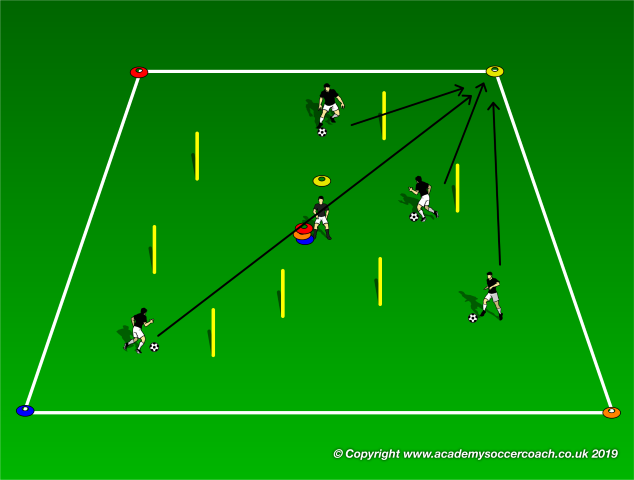
Once they stop the ball under their foot on the corner they return to dribbling in the grid and wait for the next whistle
Variations:
The variations in this game are only limited by number of players and their ability. Coaches can add more colors, defenders, and obstacles in order to challenge their players’ decision making. If limited in color pinnies and numbers of cones. I.e. if the coach throws up one cone players go to the area with one cone, two cones, the area with two cones. If players need an additional challenge two cones can be thrown in sequence and players will need to dribble to the cones in the same sequence cones were thrown.
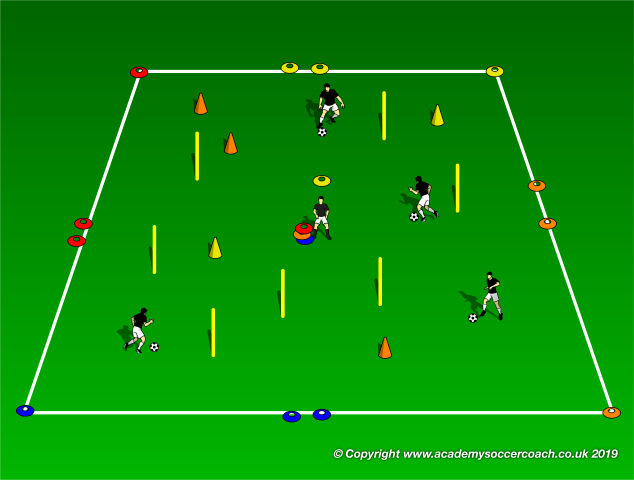
Cone Race
Description:
The purpose of the Cone Race game is, similar to the Color Recognition Game, to get players to react to visual stimuli. Players need to recognize their visual cue, and then translate that to choosing the best technique to beat their opponent to the grid. Regular cones can be used, but creating placards that have a color written on them that differs from the actual color of the placard drastically increases the difficulty of the activity.
Setup:
Three grids are created representing red, yellow, and green. Players are put into two line roughly 10 yards from the grids. The player that is "up" in either line has a ball. A coach stands between the grids and players with the placards: a yellow one that says green, a red one that says yellow, and a green one that says red.
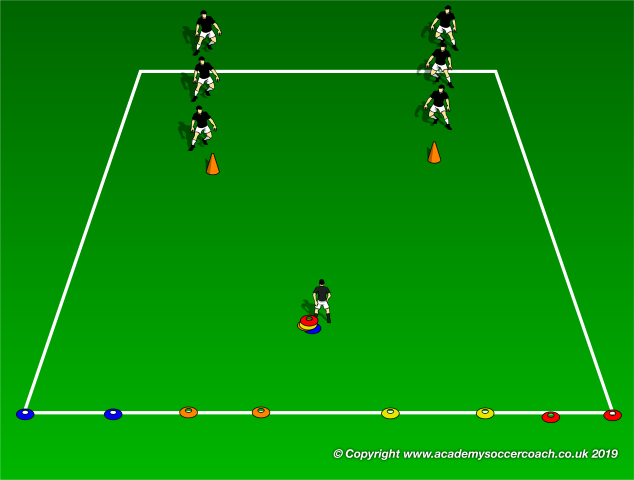
Execution:
The two players that are up start with their balls, the coach holds up one of the cards, the players then identify which grid they need to go to based on what the card says, not the color of the card. The players then race to that grid, whoever makes it there first is the winner and gets to go again, the loser goes to the back of their line.
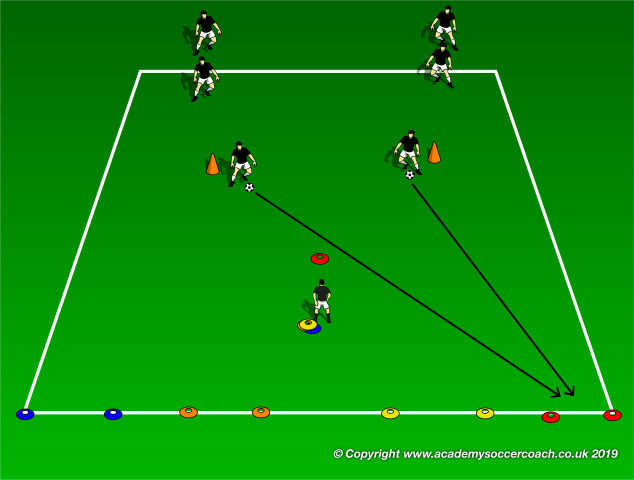
Variations:
The numbers of placards, grids, and players can vary. Cones can also be replaced by pinnies, or jerseys, or really anything that will force players to recognize and react to visual stimuli. Adding a defender can also reduce the issue of having players closer to one zone than their opposition.
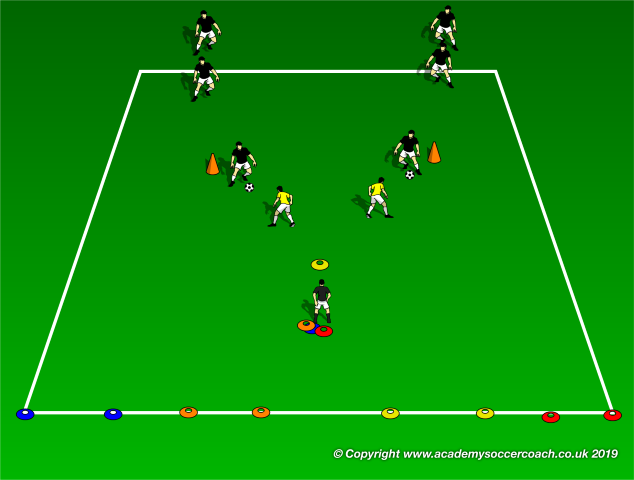
Conclusion
As with anything in life, it is human nature to make sense of chaos. Current attempts by statisticians with the use of sabermetrics are trying to map out an increasingly chaotic game and pinpoint and predict the outcomes of games. While this may make the outcomes more predictable in the future, it is impossible to ever remove the randomness of the bounce of the ball. Since that factor remains constant, even with the predictive stats and complex algorithms, the only thing coaches can do is to prepare their players for the unexpected and in doing so increase their chances of “getting lucky”.
It is my hope that these concepts, practice elements, and activities will help you create players that are able to utilize their skills to make a clearer picture of the chaotic game, and use that imagery to make better decisions leading to more goals and more wins.


